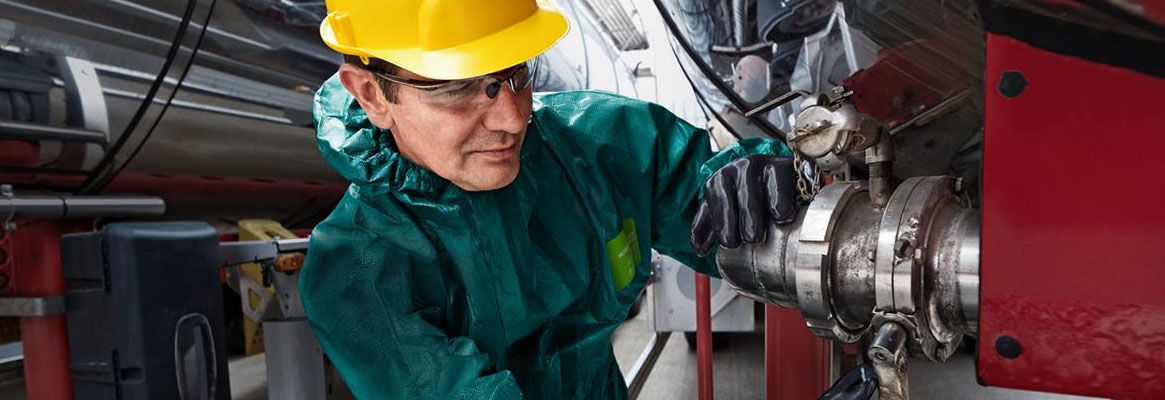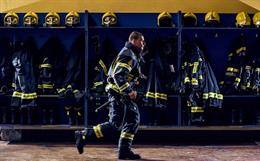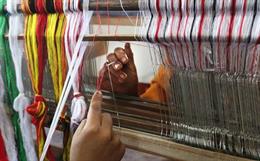In today’s world, soldiers in war field and workers in different industries are exposed to different chemicals that are hazardous in nature causing health problems many leading to death. Occupational safety and health professionals consider Chemical Protective Clothing (CPC) as a last line of defense for protecting the human from chemical and physical hazards. Chemical protective clothing used today is made of non-permeable textile fabrics. The protection of chemicals is achieved by blocking the penetration and permeation of them through the fabrics in the clothing. This is an effective method for providing sufficient protection to professionals from contact of toxic chemicals. However, the total blockage of the penetration and the permeation also affects transport of heat and moisture generated by a wearer of the clothing, resulting in heat stress and low work efficiency. A possible solution to such a problem is to produce non-permeable and breathable protective clothing. The chemical protective clothing meets the protective clothing requirement without inhibiting the human activities. The major application of protective clothing is for protecting the soldiers from the war field hazards. One such important hazard is chemical hazard which affects the human based on its characteristics and mode of entry. To overcome this problem we normally use chemical protective clothing and their property depends on the end use.
1. Introduction
A number of countries around the world have the capability to use chemical weapons. In fact, within the past decade, several events have been well documented where chemical weapons were used in armed conflict, most notably during the Iran-Iraq War. The major application of protective clothing is for protecting the soldiers from the war field hazards. One such important hazard is chemical hazard which affects the human based on its characteristics and mode of entry. To overcome this problem we normally use chemical protective clothing and their property depends on the end use.
The routes of chemical entry into the human body are oral, respiratory, and dermal. Of these three main routes, the dermal exposure is considered the primary mechanism of chemical entry through human body. While considering the entry of chemical through respiration to prevent this it is essential to consider the respiratory mask as an essential part of chemical protective clothing. It has been reported that 90% of all occupational allergic contact dermatitis was found on the back of the hands and the fore arms. However contact dermatitis among homemakers occurred in almost 50% of the cases on the palms. Where as 15% of the time it affected the back of hands and fingers. The location on body affected by occupational contact is shown in the figure (Refer Fig 1.1). This makes clear that most of workers are affected by chemicals used in industries and work areas.
The chemical protective clothing can be manufactured by many techniques that depend on the end use requirements. This clearly implies the importance of protective clothing.
__________________________________________
* Author correspondence: 4 / 138 middle shop street, Pattanam (post), Ondipudur-via, Coimbatore – 641 016, mobile: 0 9865853305, textilesamurai@rediffmail.com
2. PROTECTIVE CLOTHING
The garments used in domestic purpose protect people form normal sunlight and climatic conditions, but Protective garments are used for saving valuable human life’s from various hazards and climatic conditions which encounters human life.
Some of the hazards are
Hazards from thermal radiation.
Hazardous environments in warfare requiring bullet proof fabric.
Chemical hazards,
Mechanical hazards.
Extreme cold conditions.
Nuclear radiation.
2.1. Requirements of Protective Garments
Protective materials should have primary protective properties such as ballistic resistive, puncture resistive, nuclear resistive, biological resistive, chemical resistive material, and any combination of these properties.
Ability to incorporate communications means in electrical connection to system's general computer; wherein electrical connections are hard-wire or wireless.
Capabilities wherein the protective material is camouflaged.
Ability to house a user-supported computer and providing protection against penetrating threats to the user and to the computer.
2.2 Chemical Resistant Clothing
Where the chemical hazard results in a high level of skin protection required, appropriate chemical resistant apparel which provides an effective barrier between the chemicals used and the area of the body to be protected must be worn. It is important to note that no single material will protect against all chemicals, and that no material is totally impermeable2. Materials only temporarily resist chemical breakthrough; even the most chemically resistant material will break down after repeated chemical exposures. Selecting the clothing material which best protects against a particular chemical must be based on chemical resistance performance upon contact with the chemical. Appropriate chemical resistant clothing must demonstrate no penetration, no significant degradation, a breakthrough time greater than the duration of the task, and a low permeation rate upon contact with the chemicals used:
1) Penetration occurs when a chemical leaks thought seams, zippers, pinholes and other imperfections in the clothing.
2) Degradation is the physical deterioration of a material due to contact with a chemical. This may cause the material to soften, swell, shrink, stretch, dissolve, or to become hard and brittle. Materials having a good to excellent rating against degradation should be selected.
3) Permeation is the process by which a specific chemical diffuses through a material at the molecular level, from the outside to the inside surface of the material. Chemical permeation frequently occurs with no obvious signs of physical degradation of the material. The rate of permeation is affected by factors such as the type of chemical, chemical concentration, material thickness, humidity, temperature and pressure. Permeation testing provides two important pieces of data for material selection --- breakthrough time and permeation rate.
Breakthrough time is the elapsed time from the initial contact of the chemical on the material exterior to the time of detection of the chemical on the inside surface and is a measure of the time needed for a chemical to soak through the clothing material. The expected duration for handling the chemical must fall well within the breakthrough time of the clothing material under the conditions of use.
Permeation rate refers to the rate at which a chemical will move through the clothing material once the chemical has broken through. The higher the permeation rate, the faster the chemical will move through the material. The chemical protective clothing must have a low permeation rate under the conditions of use.
2.3 Chemical Protective Clothing
The chemical protective earlier developed used activated carbon as absorbent that absorbs chemicals; the activated carbon granules were coated using polyurethane foam, but this method of coating resulted in heat stress for the wearer due to low air and water vapour permeability of the fabric. In this project we have used activated carbon as the absorbent layer but with a novel method of coating them using needle punching technique. Our chemical protective clothing consists of three layers outer fabric, sorptive layer and inner layer (Refer Fig 2.1).
The outer shell is a water repellent layer protecting from liquid chemicals, the sorptive layer is the soul of the protective clothing absorbing liquid and air borne chemicals. The inner layer provides comfort to the wearer.
2.4 ACTIVATED CARBON
In recent times, carbon has been one of the magnificent elements which have revolutionized materials science. Carbon provides materials with excellent properties for a large spectrum of industrial applications. Carbon exists in different forms from carbon fibres to diamond. Porous carbons can be grouped into two categories: (i) Carbon foams with desired architecture of pores for structural and thermal applications; recently, these have been used as templates for making ceramics, (ii) activated carbons consisting of porous carbons with added active surface chemical groups. Porous carbons, especially activated porous carbons, constitute one of the most important types of industrial carbons and have been in use for thousands of years.
2.4.1 Activated Carbon Absorption & Adsorption
Activated carbon in very fine powder or granular form is useful to purify both water and air. Activated carbon has particular affinity to organic materials such as solvents used in printing inks and common coatings.
When the carbon particle becomes saturated with the contaminant, the exit stream will evidence a "breakthrough" of that contaminant, at which time the canister will be replaced and/or reactivated (usually by heat). Since the waste stream usually can't be interrupted during this regeneration, two or more carbon beds are often designed into the system.
Activated carbon particles don't react with most organics, permitting:
Recovery through later heat regeneration and separation, or
Incineration during regeneration from water-borne streams.
Water-born organic streams are usually mixed with activated carbon particles and removed later by filtration. Granular activated carbon is often used in the filter bed itself. It has been used to remove hydrocarbons, oils, phenols, and low concentrations of metals. It isn't applicable for most heavy metals, nor waste streams with more than 10,000 ppm organics or low molecular weight aliphatic hydrocarbons. Pretreatment of the stream may be advisable where bed clogging by particulates or suspended materials is likely.
3. Development of Chemical Protective Clothing
The chemical protective clothing is formed by five layers, the outer shell made of polyester as it has low absorption of 2% and it provides a good strength to the fabric and polyester has a good resistance to lab grade chemicals. The inner layer is made up of cotton fabric as it gives good absorbency and comfort. The middle layer comprises of cotton non woven sandwiched with activated carbon (Refer Fig 3.1).
The polyester fabric has 2% absorption, to avoid penetration of liquid chemicals through the fabric; the fabric is finished with water repellent chemical NUVA HPU.
3.1 WATER REPELLENT FINISHING OF POLYESTER
3.1.1 Nuva HPU
1. Appearance - Liquid, milky-white dispersion
2. Chemical character - Dispersion of a flour compound
3. Ionic character - slightly cationic
4. Ph (DIN 53 996) - about 4 (5% as supplied aqueous)
3.1.2 Procedure
The finishing liquor is prepared with 50 g/l of Nuva- HPU and ph of the finishing liquor is adjusted to 4 by using 0.5-1.5 ml/l acetic acid 60%. The polyester fabric is washed with water to remove any dirt particles present on the fabric. The fabric to be finished is padded in the finishing liquor for 1 hour at room temperature and the fabric is dried at 800c. The fabric is then cured at 1100c for 3 min. The fabric thus finished was evaluated for its water repellency according to AATCC test method 22 – 1996, the fabric showed a 100% water repellency.
Recipe:
Nuva HPU : 50 gpl
Acetic acid : 0.5 – 1.5 ml/l
Time : 1 hour
Temperature : room temperature
3.2 NOVEL TECHNIQUE OF EMBEDING ACTIVATED CARBON
Activated carbon is a well known absorbent, there is a world Wide insistence on this product for a multitude of uses, particularly air/gas treatment and Purification, Precious Metal Recovery, in Catalysis and in protective clothing for absorbing of hazardous chemicals. Extensive surface area pores of 5 to 10 A 0 radius, which provides unmatchable adsorption and retentive capabilities for gases and low molecular weight. The activated carbon used in the chemical protective clothing was got from core carbons pvt ltd. The carbon had the following specifications
Carbon Tetra Chloride Adsorption % - 75/85
Apparent Density gm/cc - 0.42 - 0.47
Ash Content (Max) % - max 2.5
Ball - Pan Hardness Number - 96.5+
PH - 9/11
Surface Area sq.M/gm - 1300 – 1400
Size of granules - 0.85 X 0.300 mm
The conventional chemical protective clothing was based on embedding activated carbon using adhesives and polyurethane foam with a activated carbon load of 120 – 160 GSM. These fabrics had low comfort properties of air permeability and thermal comfort causing stress to the wearer. As a solution to this problem selectively permeable membranes were developed. Which is capable of protecting from some chemicals and the membranes are too costly. Another cost effective solution to this problem is the Novel approach of bonding activated carbon using needle punching technology.
3.2.1 Preparation of non-woven fabric & Embedding of activated carbon
The novel technique of embedding activated carbon uses a base fabric made of 100 % cotton and needle punched cotton non-woven. The fabric acts as base for the activated carbon and also as a inner lining for the final fabric enabling easy absorption of sweat from the wearer and transporting them to the outer layer. More over the cotton fabric provides comfort to the wearer. The plain woven cotton fabric was spread over the table. Above the fabric needle punched non-woven produced by previously explained technique was placed and the activated carbon particles were spread uniformly over the width and length of the fabric (Refer Fig 3.2). The carbon was spread uniformly to give a GSM of 160. Above the activated carbon layer another layer of needle punched non-woven was placed. The whole assembly was then applied with pressure and wound to form a roll.
The activated carbon granules coated over the double pass needle punched fabric gets embedded in the non-woven. The cotton fibres dose not allows the carbon granules to move from its place. The activated carbon coated non woven had a GSM of 341.
3.2.1.1 Needling
The fabric thus prepared was fed in to the needle punching machine through a pair of conveyors and calender rollers. To provide a initial cohesion to the layers a pressure of 6 bar was maintained at front and back pair of calender rollers. The web was fed such that the cotton woven fabric as the top layer.
The fabric layers were needle punched with following settings:
In feed speed : 0.4 m /min
Draw off speed : 0.4 m/ min
Strokes / min : 152
Depth : 15 mm
Width : 700 mm
The activated carbon granules held in its position by the cotton fibres in the non woven is further locked by needle punching where the fibres from the top and bottom layer are drawn through the fibre web causing the fibres to occupy vertical position. The resulted composite fabric had a good locking of activated carbon granules. The woven cotton fabric was also bonded together. In the final fabric a uniform layer of cotton fibres was seen on the reverse side of the cotton woven fabric.
3.3 BONDING OF NON WOVEN AND POLYESTER FABRIC
The activated carbon sandwiched non woven and polyester fabric are bonded together using acrylic resin. Acrylic resin provides a good strength along with flexibility. The fabric is placed on a platform and the resin is uniformly sprayed on the fabric using a hand spray gun and the cotton non woven is placed over the fabric and the fabric is applied with uniform pressure. Thus prepared fabric is cured at 1100c for 2 min (Refer Fig 3.3 & 3.4).
4. Conclusion
The chemical protective clothing has been designed and developed to suit the requirements of chemical protection along with comfort. The maximum penetration was in case of acetone and it was 0.4 %, while the no penetration in case of hydrogen peroxide and sodium hydroxide. The maximum permeation was in case of dichloromethane and it was 10.79%, while no permeation in case of sulphuric acid. The maximum degradation was in case of sulphuric acid and the weight loss of the fabric was 18.60%, while no degradation in case of sodium hydroxide, Hydrochloric acid and Dimethyl Formamide. Some of the chemicals were retained by the fabric. The chemical resistance of the fabric has a good resistance towards most of the liquid chemicals and some of the chemicals in vapor form. Thus the developed chemical protective clothing is breathable along with non permeablibility.
5. Future Scope
The fabric was formed using activated carbon granules, fabric can be made of advanced materials such as activated carbon fibres. It can be made using selectively permeable membranes. The toxicity of vapors passing through the fabric can be analyzed using toxic vapor analyzer. The other non woven production technologies can be tried for coating of activated carbon. The bonding of different layers of fabric can be tried with other kinds of resins that provide more flexibility.
About the authors:
D.Gopalakrishnan
Lecturer, South India Institute of Fashion Technology,
229 A, Sathya Moorthi Road,
Ramnagar, Coimbatore – 641 009,
textilesamurai@rediffmail.com
M.Nithiyakumar
Lecturer, Department of Textile Technology,
SSM Academy of Textiles & Management,
Erode.
mnithiyakumar@gmail.com
Arpita Nayak
UG Student,
National Institute of Fashion Tech (NIFT),
New Delhi.
arpitanayak2002@yahoo.co.in
5. Reference
• Mona Suri, D Rastogi, K.Khanna, “Development of protective clothing for pesticide industry: part I”, Indian Journal of Fibre & Textile Research, vol.27, pp. 85-90, march, 2002.
• Mona Suri, D Rastogi, K.Khanna, “Development of protective clothing for pesticide industry: part II”, Indian Journal of Fibre & Textile Research, vol.27, pp. 259-265, september, 2002.
• G.Chandramohan, K.P.Chellamani,”Protective Textiles”, Texindia Fair 2000, pp. 41- 53
• Roger W.Hill, James J.Barry, “New Developments in the assement of protective fabrics using computational model”, International Non woven journal, vol 13, pp. 22-30, march, 2003.
• W.Albercht, W.Kittel Mann, Non Woven Fabrics, Wiley – VCH Verlag Gmbh & co, USA, 2002.
• Bille J.Collier, Textile Testing and Analysis, prentice – Hall Inc, USA, 2002.
• Mastura Raheel, Modern Textile Characterisation Methods, Marcel Dekker inc, USA, 2003.
• www.human.cornell.edu/units/txa/research/ntc/
• www.aie.co.jp/acc-eg.html
• www.utoronto.ca/safety/standarads/clothstd.htm
• www.tridtate.cpogle.net/et/home.asp• www.osha.gov
• www.hse.gov.uk
• www.human.cornell.edu/units/txa/research/ntc
• www.aiha.org• www.trc.ucdavis.edu/textiles/ntc%20projects/gsun_ntc_2.html
• www.ilpi.com/msds/ref/charcoal.htm
• www.edergreen.tri.res.in/explorer/air/health.htm
To read more articles on Textile, Fashion, Apparel, Technology, Retail and General please visit http://articles.fibre2fashion.com
To promote your company, product and services via promotional article, follow this link: http://www.fibre2fashion.com/services/article-writing-service/content-promotion-services.asp







